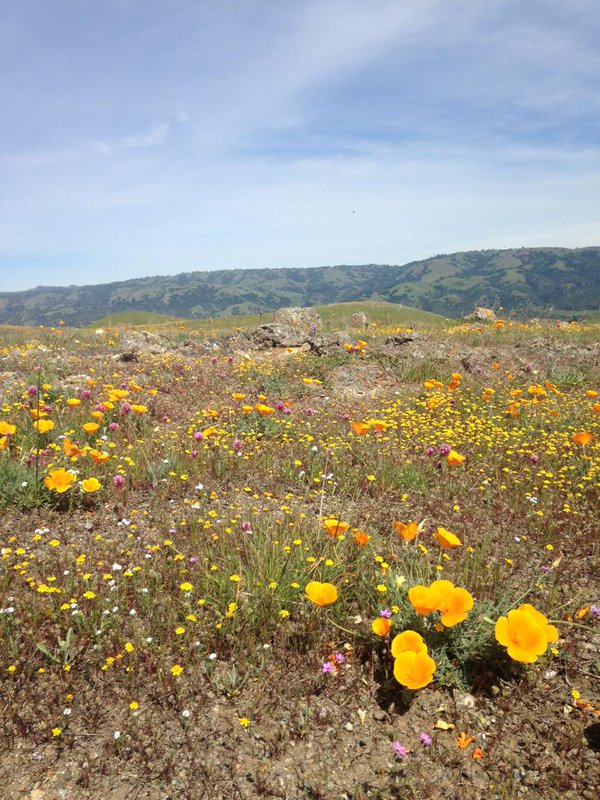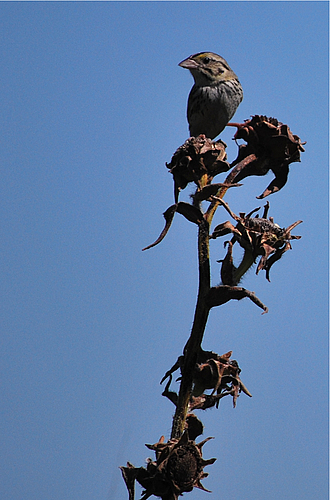Other research projects
Nitrogen deposition and grazing in serpentine grasslands
 California’s serpentine grasslands are hotspots of biological diversity, hosting many rare and endemic plants as well as the federally threatened Edith’s Bay Checkerspot Butterfly (Euphadryas editha bayensis). Although serpentine grasslands were historically resistant to invasion by non-native plants, high levels of atmospheric nitrogen deposition have allowed exotic grasses to spread. In our experiment, cattle grazing maintained the diversity and temporal stability of native plant communities by restricting the growth and spread of exotic grasses. Among the plants that responded most positively to cattle grazing was Plantago erecta, the primary larval host for Edith’s Bay Checkerspot Butterflies.
California’s serpentine grasslands are hotspots of biological diversity, hosting many rare and endemic plants as well as the federally threatened Edith’s Bay Checkerspot Butterfly (Euphadryas editha bayensis). Although serpentine grasslands were historically resistant to invasion by non-native plants, high levels of atmospheric nitrogen deposition have allowed exotic grasses to spread. In our experiment, cattle grazing maintained the diversity and temporal stability of native plant communities by restricting the growth and spread of exotic grasses. Among the plants that responded most positively to cattle grazing was Plantago erecta, the primary larval host for Edith’s Bay Checkerspot Butterflies.
Edge effects and grassland bird communities
 As a consequence of extensive habitat loss, grassland bird populations are declining across North America. To better understand how the size and spatial configuration of restored prairies affect grassland breeding bird populations, I helped conduct a four year study monitoring the distribution and abundance of 14 species in Carleton College’s Cowling Arboretum. Grassland birds like Eastern Meadowlarks (Sturnella magna), Grasshopper Sparrows (Ammodramus savannarum), and Bobolinks (Dolichonyx oryzivorus) were strongly influenced by the presence of nearby forest edges. Total species diversity increased with distance from forest edges as obligate grassland species (those that depend exclusively on grasslands for foraging and breeding) avoided restored prairies near forest edges.
As a consequence of extensive habitat loss, grassland bird populations are declining across North America. To better understand how the size and spatial configuration of restored prairies affect grassland breeding bird populations, I helped conduct a four year study monitoring the distribution and abundance of 14 species in Carleton College’s Cowling Arboretum. Grassland birds like Eastern Meadowlarks (Sturnella magna), Grasshopper Sparrows (Ammodramus savannarum), and Bobolinks (Dolichonyx oryzivorus) were strongly influenced by the presence of nearby forest edges. Total species diversity increased with distance from forest edges as obligate grassland species (those that depend exclusively on grasslands for foraging and breeding) avoided restored prairies near forest edges.